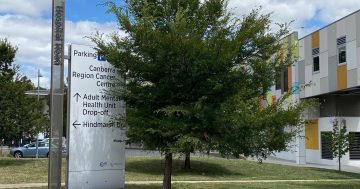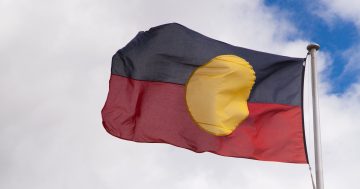
What would a wellbeing index look like for Canberra? File photo.
For a little while now, the ACT Government has been talking about its interest in introducing wellbeing indicators. This approach enables us as a community to better track how we are travelling in relation to individual, community and inter-generational wellbeing – beyond the economic indicators that Governments have traditionally drawn on to measure progress.
From Bhutan’s Gross National Happiness Index to the OECD’s How’s Life Index, this idea has been explored for some time. The latest version – New Zealand’s Living Standards Framework is one that the Chief Minister has flagged as particularly attractive.
There is a lot to like about in this model. It articulates four types of capital – natural, human, social, and physical/financial capital, and aims to identify how well we are doing in these areas.
It is always a good idea to learn from others and refrain from ‘re-inventing the wheel’. A local project around wellbeing does, however, present an opportunity to look at the full body of work that has occurred around wellbeing indicators globally, consider the work we have already done in relation to measures of wellbeing beyond economic indicators and work through how we can contribute, and build on the work to date.
This whole endeavour is being driven by the consensus that there are limitations to our current economic indicators. Economic indicators can be useful proxies on wellbeing as they can give us an understanding of our ability to find a stable job, access resources for daily needs and secure accommodation and housing.
However, they are often not being presented in a meaningful way. For example, while our unemployment figures are low by national standards, when we look at particular groups such as young people, the figures are more concerning. While our high average incomes suggest we have reasonable housing affordability, many of us know that Canberra actually has a housing affordability crisis – particularly at the lower end of the market.
One of the things that the Wellbeing Indicator’s project will need to grapple with is how this approach will integrate the good work that has already occurred around measuring liveability, wellbeing and progress. Approaches such as triple bottom line accounting already deal with environmental impact, and how we factor in these issues. We need to ensure that the good work already gone into working through these issues is not lost. This is particularly important given the Government has recognised we are facing a climate emergency and the need for us to continue to prioritise ways we support our community to respond to this crisis.
It is also important to build on the work that has already been undertaken in understanding the factors that impact on inequality, cohesion and perceptions of safety. The ACT’s involvement in the Restorative City movement is one example of where we have been trying to understand some of the underlying drivers that support strong and connected cities. This is also one of the most challenging areas in which to identify meaningful indicators and ways we can measure it. This may be one area that the ACT can contribute to the work of this wellbeing indicator approach.
An exploration into this area of work suggests that a key ingredient to achieving the potential of this type of project will be engaging deeply with the community. There is a significant opportunity for the community to be contributors and collaborators in this work. One of the most interesting initiatives around this type of approach is the city of Toronto in Canada. Wellbeing Toronto (WT) has moved to giving power back to communities in identifying issues, defining risk and identifying the indicators that they believe are important to measure for their community. In this, data is transparently provided to policymakers and communities alike to respond to the nuanced issues occurring at a neighbourhood level.
All of this is occurring in the context of the global commitment to progressing the Sustainable Development Goals. While goals such as ending poverty may be seen as an issue that is removed from the problems of Canberra, when we look at the issue of food security for our lowest-income households, we must continue to focus on these basic needs as part of any endeavour that aims to look at wellbeing.
Canberra is at a time in its development where we are investing significantly into the built infrastructure and seeing the social infrastructure of the city changing and evolving. If done well, the Wellbeing Indicators Project could be meaningful and important for our whole community.
What do you think are important indicators to consider when measuring the wellbeing of our local community?

















